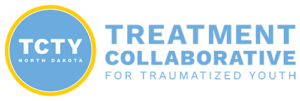Assessing and screening for trauma and traumatic stress symptoms can help identify trauma in children. With trauma screening, we can ensure individuals receive appropriate interventions and services.
Trauma Screening

Trauma Screening for Children
What Is Trauma Screening?
- Brief
- An evaluation for the possible presence of a problem
- Can be used universally or with targeted groups
- Promotes early intervention
Why Is Screening Important?
Unrecognized and untreated child traumatic stress can lead to the development of trauma-related symptoms. These symptoms can persist and worsen over time, making it critical to identify them early.
Trauma screening in child-service systems, such as child welfare and juvenile justice (SAMSHA, 2014), is one way to identify children and adolescents with trauma symptoms and improve access to evidence-based treatments. Trauma screening by frontline workers helps identify youth who need further assessment and possible intervention, inform service planning, create structure to discuss a child’s welfare, and sustain trauma-informed systems (Lang, Ake, Barto, Caringi, Little, Baldwin, Sullivan, Tunni, Bodian, Stewart, & Stevens., 2017).



TCTY and Trauma Screening
Researchers at the University of Minnesota Ambit Network have developed a brief trauma screen called the University of Minnesota’s Traumatic Stress Screen for Children and Adolescents (TSSCA) to be used by frontline workers across child serving systems. The TCTY is collaborating with the Ambit Network on implementing the TSSCA in child-serving systems in North Dakota.
Trauma Screening Tool: TSSCA
The University of Minnesota’s Traumatic Stress Screen for Children and Adolescents (TSSCA) is designed to provide clinicians, caseworkers, educators, and other staff with a tool for screening children, ages 5–18 years, that have or may have experienced a traumatic event and are in need of services.
The TSSCA features five simple questions to measure children’s traumatic stress as well as extensive instructions and recommendations for using the instrument. The score result of the TSSCA will suggest one of three categories:
- Normal
- Borderline
- Assessment Needed
The UCLA PTSD Index for DSM IV was used as a standard to inform the development of these categories.
The TSSCA is available in the public domain and free of use.
Training in the TSSCA
North Dakota
TCTY has collaborated statewide to improve trauma screening in child serving systems in this state by developing the ND Trauma Screening Training.
This training has a pre-test quiz and 6 videos with a short post-test quiz after each video. The videos should be completed in order:
- The Reality of Trauma
- The Need and Purpose of Trauma
- Screening
- The TSSCA
- Administering the TSSCA
- Scoring the TSSCA
- Understanding the Results & Next Steps


